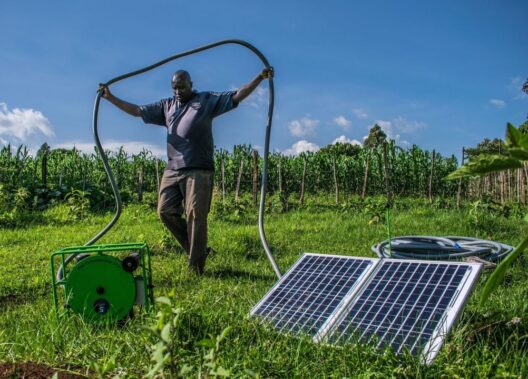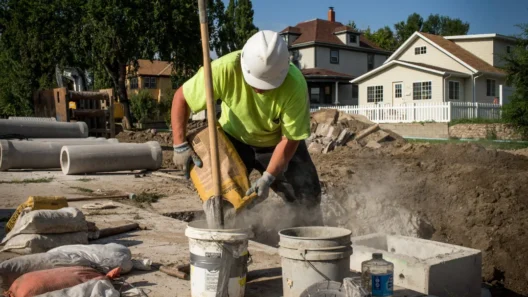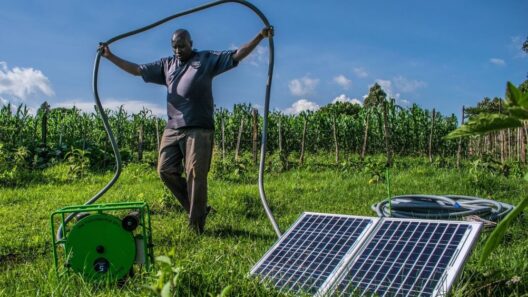As urban centers burgeon and populations swell, the phenomenon of waste heat—excess thermal energy generated by human activities—has come under scrutiny. The concentration of human activity in cities leads to the release of waste heat, posing a question of whether this thermal byproduct exacerbates global warming. This exploration into the intricate relationship between urban waste heat and climate change is critical, given the systemic implications of rising global temperatures.
To unpack the impact of waste heat, it is essential to first define what constitutes this thermal energy. Waste heat primarily originates from industrial processes, transportation, and the usage of electricity for heating and cooling. Urban environments contribute significantly to this phenomenon due to their built environment, characterized by heat-absorbing materials such as asphalt, concrete, and metal. Together, these factors amplify local temperatures, a scenario commonly referred to as the “urban heat island” (UHI) effect.
The UHI effect manifests as urban areas becoming significantly warmer than their rural counterparts. This discrepancy can be attributed to several factors, including altered land surfaces, reduced vegetation, and higher energy consumption. Moreover, cities often experience heat retention during the night, exacerbating overall temperature increases. The ramifications of the UHI effect extend beyond mere discomfort; they beckon an inquiry into whether the accumulated waste heat contributes to the climate crisis.
Research indicates that while the contribution of waste heat to global warming is minimal compared to greenhouse gases such as carbon dioxide and methane, it is not negligible. It is estimated that cities emit a staggering 40% of global anthropogenic CO2 emissions. Correspondingly, the cumulative effect of waste heat from urban centers could amplify local warming, creating feedback loops that may inadvertently influence broader climatic patterns.
One of the ways in which waste heat may accelerate global warming is through its interaction with the surrounding atmosphere. Waste heat alters the thermal profile of local climates, leading to variations in precipitation patterns and unanticipated weather phenomena. The elevated temperatures may promote enhanced evaporation rates, subsequently increasing humidity. This increase in atmospheric moisture can contribute to severe weather events, such as torrential rains and storms, which have direct implications for both ecosystems and human infrastructure.
Furthermore, the persistence of waste heat in urban areas can lead to increased energy demand. As temperatures rise, the demand for air conditioning and refrigeration also increases, leading to higher greenhouse gas emissions from power plants. This cyclical relationship between urban heat, energy consumption, and greenhouse emissions underscores the complexity of addressing climate change in metropolitan areas.
Another area of concern is the interaction of waste heat with local air quality. Elevated temperatures can exacerbate the formation of ground-level ozone, a harmful air pollutant linked to respiratory illnesses and other health risks. Consequently, urban populations may face disproportionate health impacts as waste heat contributes to unfavorable environmental conditions. The intersection of public health and climate change presents an urgent challenge for policymakers.
Addressing the multifaceted issue of waste heat necessitates innovative urban planning strategies. Implementing measures to mitigate waste heat can play a pivotal role in enhancing urban resilience against climate change. For instance, increasing vegetation through urban greenery initiatives can help absorb energy and cool urban microclimates. Urban forests, green roofs, and reflective pavements are promising methods to counteract waste heat and promote sustainable urban development.
Additionally, enhancing the energy efficiency of buildings and transportation systems can significantly reduce the amount of waste heat produced. Cutting-edge technologies and systems, such as district heating, heat recovery systems, and improved insulation, can dramatically decrease energy waste in our urban landscapes. Transitioning to renewable energy sources can further curtail the greenhouse gas emissions associated with traditional fossil fuels, thus indirectly reducing the waste heat generated in the process.
Policy interventions are also crucial in addressing the waste heat conundrum. Governments need to enact zoning laws and building regulations that encourage sustainable architectures, like passive heating and cooling designs that minimize energy consumption. Public awareness campaigns can galvanize community involvement, prompting individuals to adopt practices that reduce waste heat in their daily lives.
While the concept of waste heat may seem peripheral when examined alongside greenhouse gas emissions, its implications are profound. The interconnectedness of urban planning, public health, and climate dynamics cannot be overstated. Waste heat represents a tangible manifestation of our role in the climate crisis, serving as a microcosm of the broader environmental challenges we face.
In summary, while waste heat from cities may not be the principal driver of global warming, its effects cannot be dismissed. In contrast, it stands as a significant factor in the intricate web of urban climate interactions, exacerbating existing issues and generating new challenges. By adopting sustainable practices, enhancing technological efficiencies, and collaborating across sectors, cities can mitigate the impacts of waste heat and contribute to the collective effort against climate change. Future urban environments must prioritize sustainability in their design and function, ensuring that they do not exacerbate the very issues they contribute to. This holistic approach will not only curb waste heat but also foster resilience in the face of an increasingly uncertain climate future.







